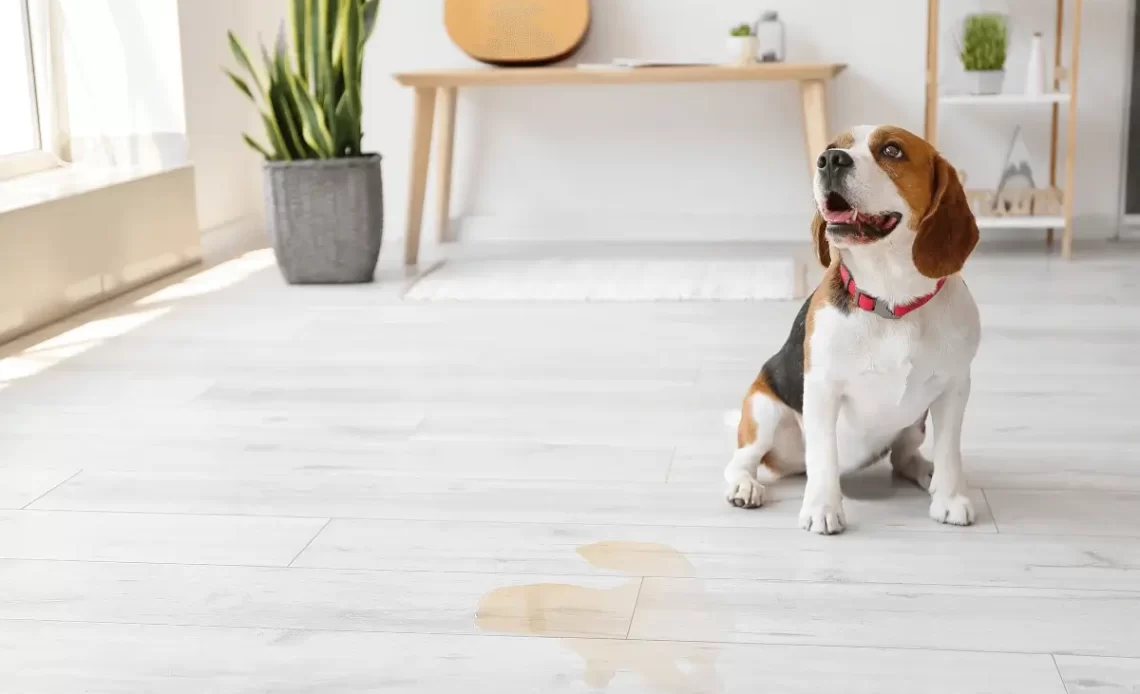Training your dog or puppy to use pee pads can be a practical solution, especially for those living in apartments, dealing with harsh weather, or managing puppies not yet ready for outdoor walks. This guide on how to train dog to use pee pad provides a step-by-step approach to successful training for dogs of all ages.
Why Use Pee Pads?
Pee pads are an excellent tool for housebreaking, offering a clean and accessible potty option. They protect your floors, simplify cleanup, and are particularly useful for:
- Protect Your Floors: Pee pads help safeguard your flooring from accidents, minimizing damage and reducing the hassle of deep cleaning.
- Simplify Cleanup: Disposable pee pads make it easy to maintain cleanliness in your home. Simply replace the used pad with a fresh one.
- Perfect for Apartment Living: For those without easy access to outdoor spaces, pee pads provide a practical alternative.
- Great for Puppies: Puppies that are too young or unvaccinated to go outside safely can use pee pads as a temporary potty solution.
- Ideal for Senior or Ill Dogs: Older dogs or those with health conditions can benefit from the accessibility of pee pads, reducing strain and discomfort.
- Inclement Weather Backup: On rainy, snowy, or extremely cold days, pee pads ensure your dog has a comfortable potty option indoors.
Step-by-Step Guide to Pee Pad Training
Select the Right Pee Pad: Choose a high-quality, absorbent pee pad that suits your dog’s size. Consider pads with built-in attractants for easier training.
Pick a Designated Spot: Place the pee pad in a specific, quiet area away from your dog’s food and sleeping space. Keeping the location consistent avoids confusion.
Introduce the Pee Pad: Encourage your dog to sniff and explore the pad. Use positive reinforcement like praise or treats to create a positive association.
Set a Routine:
To effectively train your dog to use a pee pad, establishing a consistent routine is key. Take your dog to the pee pad during specific times, such as:
- After waking up: Dogs often need to relieve themselves right after sleeping.
- After eating or drinking: Food and water intake often triggers the need to go.
- Before bedtime: Ensure your dog uses the pad before sleeping to prevent accidents overnight.
- Every few hours during the day: Regular trips help reinforce the behavior and reduce mishaps.
Following a routine will help your dog associate these moments with using the pee pad, making the habit easier to build over time.
Use a Command
Introduce a simple command like “Go potty” whenever you place your dog on the pee pad. Consistently pairing this phrase with the action helps your dog associate the command with the desired behavior. With repetition and positive reinforcement, your dog will learn to respond to the command and use the pee pad on cue.
Reward Success
Each time your dog successfully uses the pee pad, reward them immediately with a treat, verbal praise, or playtime. Positive reinforcement helps your dog understand that using the pee pad is a good behavior. Consistent rewards will encourage them to repeat the action and build confidence in their training.
Handle Accidents Calmly
When accidents happen, stay calm and avoid scolding your dog. Instead, clean the area thoroughly to remove any lingering odors that might attract them back to the same spot. Gently redirect your dog to the pee pad and reward them when they use it successfully. Patience and consistency are key to overcoming setbacks.
Gradual Transition (Optional)
If you plan to transition to outdoor potty training, slowly move the pee pad closer to the door, then outside. Use the same commands and rewards to ease the shift.
Advanced Training Techniques
- Crate Training: Dogs naturally avoid soiling their sleeping area. Use a crate to complement your pee pad routine and schedule regular breaks.
- Clicker Training: Mark the moment your dog uses the pad correctly with a clicker, followed by a treat for precise reinforcement.
- Boundary Training: Confine your dog to a smaller area with the pee pad to prevent accidents elsewhere and reinforce correct use.
Tips for Success
- Consistency: Stick to a schedule and routine for better results.
- Patience: Accidents are part of the learning process. Avoid punishment, which can cause anxiety.
- Use Attractants: Attractant-infused pads or sprays can make the training process smoother.
- Monitor Progress: Gradually extend the time between visits to the pad as your dog gains control.
Training Older Dogs
Older dogs may take longer to adapt, but they can still learn how to train dog to use pee pad with similar methods. Gradually introduce the pad, use consistent positive reinforcement, and remain patient and persistent.
FAQs
How do puppy pads work?
Puppy pads are absorbent mats designed to soak up urine and contain odors, making them a convenient indoor potty solution.
How do I encourage my dog to use a pee pad?
Use positive reinforcement by rewarding your dog with treats and praise when they use the pad correctly. Additionally, place the pad in a consistent location and use a command like “Go potty.”
What if my puppy refuses to use the pee pad?
Ensure the pad is in a quiet, accessible location and use attractant sprays to guide them. Be patient and redirect them to the pad whenever they show signs of needing to go.
How do I transition from pee pads to outdoor potty training?
Gradually move the pee pad closer to the door over time. Once your puppy is comfortable, place the pad outside and continue using commands and rewards until they adapt to outdoor potty breaks.
Can older dogs learn to use pee pads?
Yes, older dogs can be trained with patience and consistency. Introduce the pads gradually and use rewards to reinforce the behavior.
How often should I change the pee pad?
Change the pad as soon as it is soiled to maintain cleanliness and prevent your puppy from avoiding it due to odor.


